Archives: Blog

How to choose the right heavy haulage provider
Choosing the right heavy haulage company is an important decision for your own business. Failure to opt for a reputable company can damage your company’s reputation, harm your day-to-day operations, negatively impact your supply chain and hurt customer relationships.
If your clients are relying on you to provide a product, you must put your trust in a professional haulage company.
At J.B. Rawcliffe & Sons, we understand the importance of a reliable heavy haulage service more than most – which is why we’re here to help you.
Read on to find out how you can choose the right heavy haulage transport company to take your heavy equipment from one place to the next.
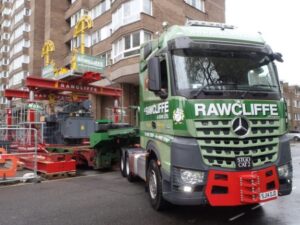
How can a professional haulage company benefit you?
If your company is regularly transporting goods across the UK and you’re struggling to keep up with the demands of hauling abnormal loads, then a heavy haulage company is ideal for you.
Not only will they handle the difficult task of transporting goods from point A to point B, but they provide cost savings.
Heavy haulage companies have their heavy haulage vehicles that can transport heavy loads like construction equipment while providing a service quality you’d expect.
Hauling companies have all the equipment and the right vehicles for every type of job, something you’re unlikely to possess. They can also provide escort vehicles for a particularly abnormal load, as well as other services you’re unlikely to match – saving you time, resources and money.
7 tips for choosing a reputable company for heavy haulage
So, you have some goods that you need transporting and you require the services of a heavy haulage company? Follow our tips to ensure you pick the right company.
Consider the cargo
Before choosing the right heavy haulage company, you must first recognise exactly what you need to transport.
A reliable heavy haulage company will be able to handle all kinds of abnormal loads, but you may have a particularly complex piece of equipment to transport. This will need specialised support, especially if it’s extremely large.
Experience matters
Experience is one of the key factors in choosing a heavy haulage business to transport your goods. You may find a new business in your area that looks great on the surface, but it lacks the experience that other companies in the area may possess.
Heavy haulage is a complex task and you want to ensure your goods – which are likely expensive – are in the hands of somebody you can trust to get the job done efficiently.
Find a company with a long history of successful heavy haulage tasks; look up customer reviews and case studies, and speak to other business owners you know who have used a haulage company previously.
Don’t opt for the cheapest quote
Running a business can be expensive, especially in the modern era, and saving pennies everywhere you can is essential.
However, when it comes to transporting your expensive, heavy goods, choosing the cheapest offer could end up costing you more in the long run.
It’s also important to remember that the lowest quote could include hidden fees.
Your best bet is to reach out to multiple companies for quotes and compare them. The lowest quote may well be the best service but you should at least compare to others.
If you get a suspiciously low quote from one heavy haulage company, it’s probably best to stay away in case they have a poor track record and include hidden costs to bring the price up.
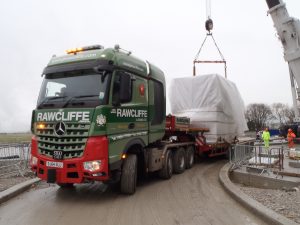
Check for other services
It’s wise to check if a heavy haulage company can provide services other than simply transportation. Because heavy haulage is such a complex industry and jobs can vary massively depending on the load and distance involved, it’s beneficial if a company can offer more than just transportation.
You may find a heavy haulage company that is willing to go above and beyond to offer you bespoke, excellent service.
Who knows, you may even need this company for other services further down the road and you’ll be thankful you set up a relationship with them now.
Check insurance
You should check the heavy haulage company for insurance coverage. Ensure their driver is fully covered and that the company is insured in case of a crash or damage to your goods.
The last thing you want after hiring a company is your expensive goods to be damaged in transit and you have to foot the bill.
Prioritise customer service
How is the heavy haulage company on the phone? Are they friendly and attentive or standoffish and rude?
Are they open to discussing the entire task at hand, the goods that need transporting or are they a little short and straight to the point?
You’ll get a feel for how a business may perform based on how they interact with you. If you get a bad vibe when speaking to them, do not trust them with your heavy loads.
Do they have a modern fleet?
How new are the heavy haulage company’s vehicles?
When speaking to the company, ask them questions about the fleet, such as its age and condition and what type of vehicles it has available.
If they have a limited number of vehicles or their current stock is outdated, it may be best to opt for a different heavy haulage company.
Are they environmentally responsible?
Finally, are they eco-friendly?
In 2024, businesses must be environmentally responsible so if you find a heavy haulage company that isn’t, you should probably avoid them.
Companies that demonstrate their care for the environment show an empathetic side and are likely to care more about the quality and efficiency of their delivery. They can also future-proof your supply chain against regulation changes.
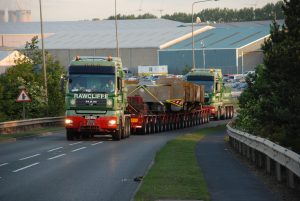
Choose the most reliable heavy haulage company in the UK
So, you’re ready to find a reliable, efficient and professional heavy haulage company. Luckily we know just the one – us!
At J.B. Rawcliffe & Sons, we believe we’re the best choice for transporting heavy goods around the UK. Here’s why:
- We’re environmentally responsible
- We prioritise customer service
- Our modern fleet is unrivalled
- Our insurance covers everything
- We’re certified
- Our service is excellent value for money
- We have incredible experience in all types of heavy haulage
If you’re still undecided on which heavy haulage company to opt for, why not contact us and speak to a member of our team? We’ll be happy to discuss your heavy haulage needs and how we can help you.
Simply call 01695 737880 or send an email to enquiries@jbrawcliffe.com.
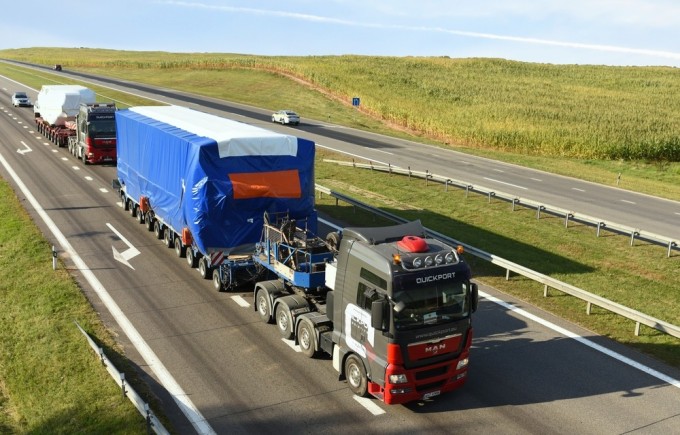
Why Precision Matters in Heavy Haulage at J.B. Rawcliffe & Sons Ltd
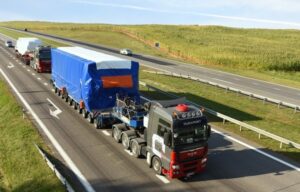
Almost any industry can benefit from heavy haulage transportation. And, in our 45-plus years of working in the transportation industry, we’ve worked with companies in a variety of sectors.
We are leaders in UK heavy haulage and have covered every aspect of transport and haulage – ensuring precision, safety and efficiency at every step.
Whether it’s using escort vehicles or examining every detail of a task, we take accuracy and precision importantly at JB Rawcliffe and Sons.
Continue reading to find out why.
What is heavy haulage?
Heavy haulage is the movement of abnormal and oversized goods and objects that cannot be dismantled and transported using standard means of distribution.
Large, cumbersome goods are transported using specialist equipment and machinery. Regular haulage is simple transportation from one location to another, but heavy haulage involves a lot more planning and strategy to ensure the oversized equipment safely reaches its destination.
Heavy haulage not only requires more, in-depth planning but also specialist equipment and experienced and qualified drivers to safely transport the freight.
Which type of heavy haulage can we transport?
Most industries can take advantage of heavy haulage services – especially from JB Rawcliffe & Sons.
Heavy haulage is ideal for transporting heavy, oversized items that are too big to fit on standard or large vehicles.
The type of cargo we can transport with our specialised vehicles includes:
- Turbines
- Helicopters
- Bungalows
- Generators
- Cooling towers
- Aircraft parts
In our decades of hauling heavy goods, we have safely transported objects from the construction, defence, industrial, marine, and oil and gas industries.
Goods we have transported include the ones listed above and so much more – all thanks to our highly qualified drivers and high-quality specialist lifting equipment and vehicles.
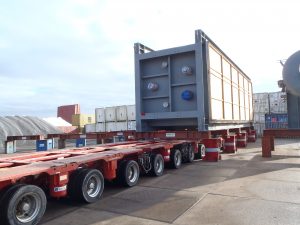
Why is precision important in heavy haulage in the UK?
Precision and accuracy are vitally important to JB Rawcliffe & Sons.
If we put in all the hard work in the build-up to the actual transportation of a company’s goods, it makes our jobs much easier and ensures a safe and efficient delivery.
Failure to check the correct dimensions of the goods can lead to choosing the wrong vehicle for the task. Similarly, if we do not investigate the pick-up and drop-off locations, difficulties may arise during transportation. This could result in choosing a vehicle too large to access both or either location.
And finally, the route must be planned to ensure our vehicles and the goods can safely navigate the roads en route.
What are the four key planning aspects in ensuring precision in heavy haulage?
1. Find out as much information as possible
To efficiently complete a heavy haulage task, we must be as informed as possible. This involves discovering the size and weight of the goods in question, where they’re being picked up from and where they’re being delivered.
Figuring out every possible piece of information about the heavy haulage task at hand is the best possible way of setting ourselves up for a successful delivery.
As a general rule of thumb, we always ask our customers for the same information, which is:
- Collection and delivery locations
- Details of the goods, including dimensions and weight
- Loading requirements (i.e. forklift, tail lift)
- Preferred delivery dates and times
If all customers provide the relevant information to us, we can start effectively planning which vehicle(s) to use, the pick-up location, the route and the destination.
2. Choosing the correct equipment and vehicle
Once all information has been collected, we can discuss the correct vehicle to use.
What do we have to choose from, though?
- Bogies
- HIAB cranes
- Modular equipment
- Platform trailers
- Prime movers
- Semi-low loaders
- Self-propelled modular transporters (SPMT)
We must know the dimensions and weight of the goods because heavier objects may require an escort vehicle.
An abnormal load is classed as weighing more than 44,000kg, a width of more than 2.9 metres and a length of more than 18.65m. If the goods in hand tick these boxes, we will arrange an escort vehicle.
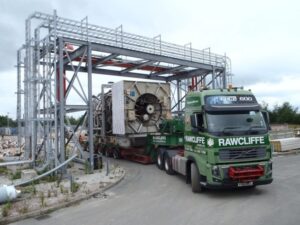
3. Research both pick-up and drop-off locations
The third key aspect to successfully planning a heavy haulage task is to take a detailed look at points A and B.
For instance, where is the pick-up location, and are there any entry or overhead restrictions? This could be as simple as the entrance to the pick-up location being positioned on a narrow street or low-hanging trees nearby.
Also, what is the ground condition like?
Once we gain entry to the pick-up location, do we need any specialised equipment to lift the goods onto our vehicle?
Then, similar questions should be asked about the destination. Precision and efficiency are at the forefront of everything we do – and these questions must be answered before we can accurately pick up and deliver any goods.
4. Plan the route
Now, it’s time to plan the route. Once we’ve figured out any restrictions at the two locations, the size of the goods and chosen the correct vehicle, it’s all about working out the most suitable route.
This includes checking the types of roads we’ll be navigating, avoiding any that are too small, and ensuring a timely and safe delivery.
Fortunately, all of our team are highly qualified and experienced in planning, loading, delivering and unloading heavy equipment.
Reliable and efficient heavy haulage services
At JB Rawcliffe & Sons, we pride ourselves on offering the most efficient and professional heavy haulage services across the entire United Kingdom.
All of our success is based on the hard work we put in before picking up your goods. Precision is key in everything we do, and it shows with each pick-up and delivery we complete.
Without putting in the time at the research and planning stage, we would simply not be able to provide the high-quality service that we pride ourselves on.
Do you have oversized equipment and machinery that requires safe and reliable transportation? Don’t wait any longer. Contact us today by filling in our contact form, calling 01695 737 880, or emailing enquiries@jbrawcliffe.com.
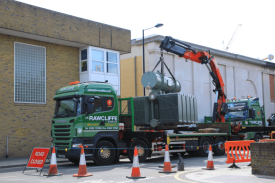
What are HIAB trucks used for and how do they work?
If you’re a company that requires the transportation of heavy goods – whether it’s machinery or construction materials – a HIAB truck could be just the answer you’ve been searching for.
HIAB trucks – also known as HIAB cranes and lorries, or lorry loaders – are powerful machines that can perform a wide range of lifting and transportation tasks. They’re utilised by companies all around the UK daily and are excellent at taking heavy goods from point A to B without strain or stress.
Interested in finding out more about HIAB cranes? Read on to find out what they are and how they work.

What is a HIAB crane?
A HIAB truck is a lorry-mounted crane that can both lift heavy objects and transport them on their bed. HIAB – Hydraliska Industri AB – is a Swedish brand name that’s now synonymous with lorry-mounted cranes thanks to their excellent quality and popularity ever since their beginnings in 1944.
A HIAB lorry is a truck with a fitted crane that lifts, transports and hauls heavy loads with ease.
This unique device, combining the traditional crane with a truck, has transformed haulage tasks across a wide range of industries thanks to its 2-in-1 lift and transport ability.
How does a HIAB lorry work?
A HIAB truck works by lifting heavy goods and loading them onto the bed of the truck to transport them to another location.
A controller will manage the lorry’s crane using a remote control. The HIAB crane can both reach up high to lift goods to an otherwise tricky spot and lift extremely heavy objects.
The vehicle’s engine powers the hydraulics of the crane to grip objects and move them either on or off the truck.
What is a HIAB truck used for?
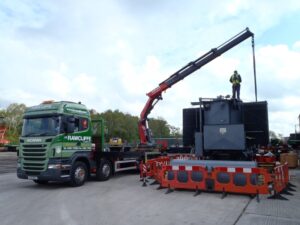
HIAB trucks are used in the heavy haulage industry to assist with the transportation of heavy goods for a wide variety of sectors.
The crane can lift a huge range of objects, including:
- Pallets
- Metal frames
- Construction materials and equipment
- Shipping containers
- Farming equipment
- Vehicles
- Display stands
- Heavy duty pumps
A HIAB crane offers fantastic flexibility to load and unload heavy objects quickly, efficiently and safely without the need for additional equipment, such as forklifts or tail lifts.
This is another major benefit of HIAB trucks as their functionality allows companies to save money on extra vehicles or equipment to help with the loading and unloading of goods.
Do you need a licence for a HIAB crane?
Yes, you need a licence to be able to drive a HIAB truck.
You can complete a course to earn a certification with either The Association of Lorry Loader Manufacturers and Importers (ALLMI) or the National Plant Operators Registration Scheme (NPORS).
A course to become a HIAB truck driver and controller involves learning about the legislation, pre-operational checks, maintenance, preparing the crane for use and, of course, the use of controls.
Once you have successfully completed a course and earned a qualification as a certified lorry loader, you can control a HIAB crane truck.
HIAB truck hire at JB Rawcliffe & Sons
If you require the services of a highly qualified team of heavy haulage experts, check out our HIAB crane hire at JB Rawcliffe & Sons.
We can provide fantastic HIAB truck hire for clients all around the UK thanks to our extensive fleet with lifting capacities to suit every task. No matter your goods, we’ll always have a vehicle available to meet your requirements – even at short notice.
Are you interested in our HIAB truck hire services? If so, don’t hesitate to contact us today. You can get in touch either by calling 01695 737 880 or sending an email to enquiries@jbrawcliffe.com.
A member of our friendly team will be happy to discuss your heavy haulage requirements and go through our HIAB truck options.
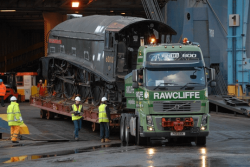
4 Tips for Successful Heavy Haulage in the UK

Moving heavy machinery and equipment across the country can be a tricky and demanding exercise. Heavy haulage in the UK requires a lot of planning, expertise and skill, but when done correctly, it can save a company a lot of money, stress and time.
But, what is heavy haulage and what factors should be considered when planning to transport large goods? Continue reading our guide below to find our four tips for successful heavy haulage.
What is heavy haulage?
Heavy haulage is the term associated with the transportation of large items, such as heavy machinery and equipment, that require specialist vehicles to reach their destination.
The heavy goods are transported from the pick-up location to the desired destination by being loaded onto specially designed heavy haulage vehicles. Typically, heavy haulage transportation is used by companies in construction, agriculture, defence, marine equipment, and oil and gas.
What to consider when transporting heavy haulage

When transporting heavy haulage in the UK – or across Europe – several key factors must be considered to efficiently deliver goods.
In our experience, there are four essential aspects to cover – gathering the right information, choosing the correct equipment, researching point A and point B and planning the route.
Failure to properly plan will result in problems throughout the heavy haulage process. Here are our four tips for ensuring the heavy haulage process is as efficient and safe as possible.
1. Gather as much information as possible
The first step to planning a successful heavy haulage task is to be as informed as possible about the project. This includes the size and weight of the goods, where they’re being picked up from and where they’re being delivered to.
Identifying every detail is the best possible preparation to ensure the efficient pick-up, transport and delivery of heavy goods.
2. Choose the right equipment
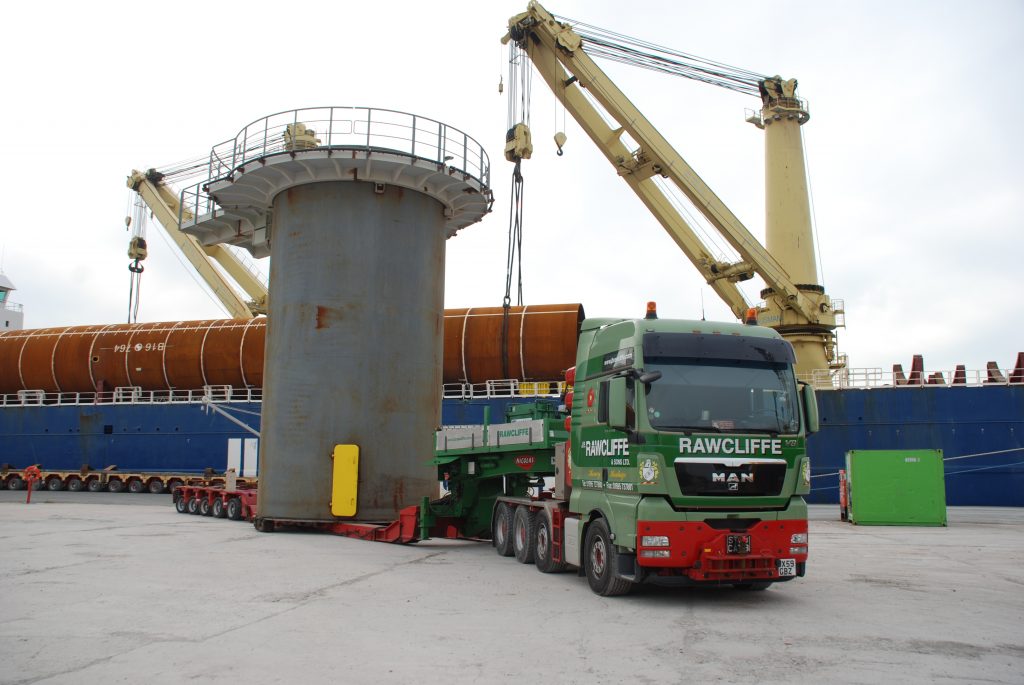
To effectively choose the right heavy haulage equipment, the first step must be done properly.
If all information is collected, including the exact dimensions and weight of the goods, the right equipment can be chosen.
At JB Rawcliffe & Sons, we can offer the following equipment to ensure the safe and efficient delivery of heavy goods:
- Bogies
- Low loaders
- Modular equipment
- Platform trailers
- Prime movers
- Semi-low loaders
- SPMT (self-propelled modular transporters)
If the heavy goods to be transported are classed as an abnormal load (weight of more than 44,000kg, width of more than 2.9 metres, and length of more than 18.65m), planning must be put in place to ensure they arrive safely. This can include using an escort vehicle.
Choosing the right piece of equipment provides the best possible opportunity for successful transport and delivery.
3. Research pick-up and drop-off points
The next step to achieving a successful heavy haulage task is to research the start and end of the journey. Several questions must be answered, including:
- Where is the pick-up location?
- Are there any entry or overhead restrictions?
- Will you need specialist equipment to lift the goods, i.e. forklift truck?
- Where is the drop-off destination?
- What are the ground conditions at both locations?
4. Plan the route

Once all the details of the goods have been collected, the right equipment has been chosen and the drop-off and pick-up locations have been researched, it’s time for the final step.
The route has to be planned correctly to ensure smooth delivery of the goods. Every step of the planning process is important but if the route isn’t researched and planned, the delivery will not go smoothly. This includes things like checking for roadworks, size restrictions on certain roads, toll roads and whether it would be easier to travel during the day or night.
Planning every aspect of the route should also include a plan B and C in case something unforeseen happens with plan A, such as a road traffic accident.
Safety is also paramount, for both the individuals transporting the goods and the goods themselves – and planning is key to ensuring this.
Choose JB Rawcliffe & Sons for your heavy haulage
If you have large goods and heavy machinery that need transporting across the UK or Europe, JB Rawcliffe & Sons are here to get the job done.
We have decades of experience in heavy haulage and have mastered the process now. We meticulously research all aspects of heavy haulage, from the size and weight of the goods to the pick-up and drop-off locations and the route.
We are known for our safety and efficiency and have worked with hundreds of companies, successfully delivering goods of all sizes and weights.
If you require heavy haulage services, don’t hesitate to contact us today. We’re more than happy to discuss your requirements and get the ball rolling.
